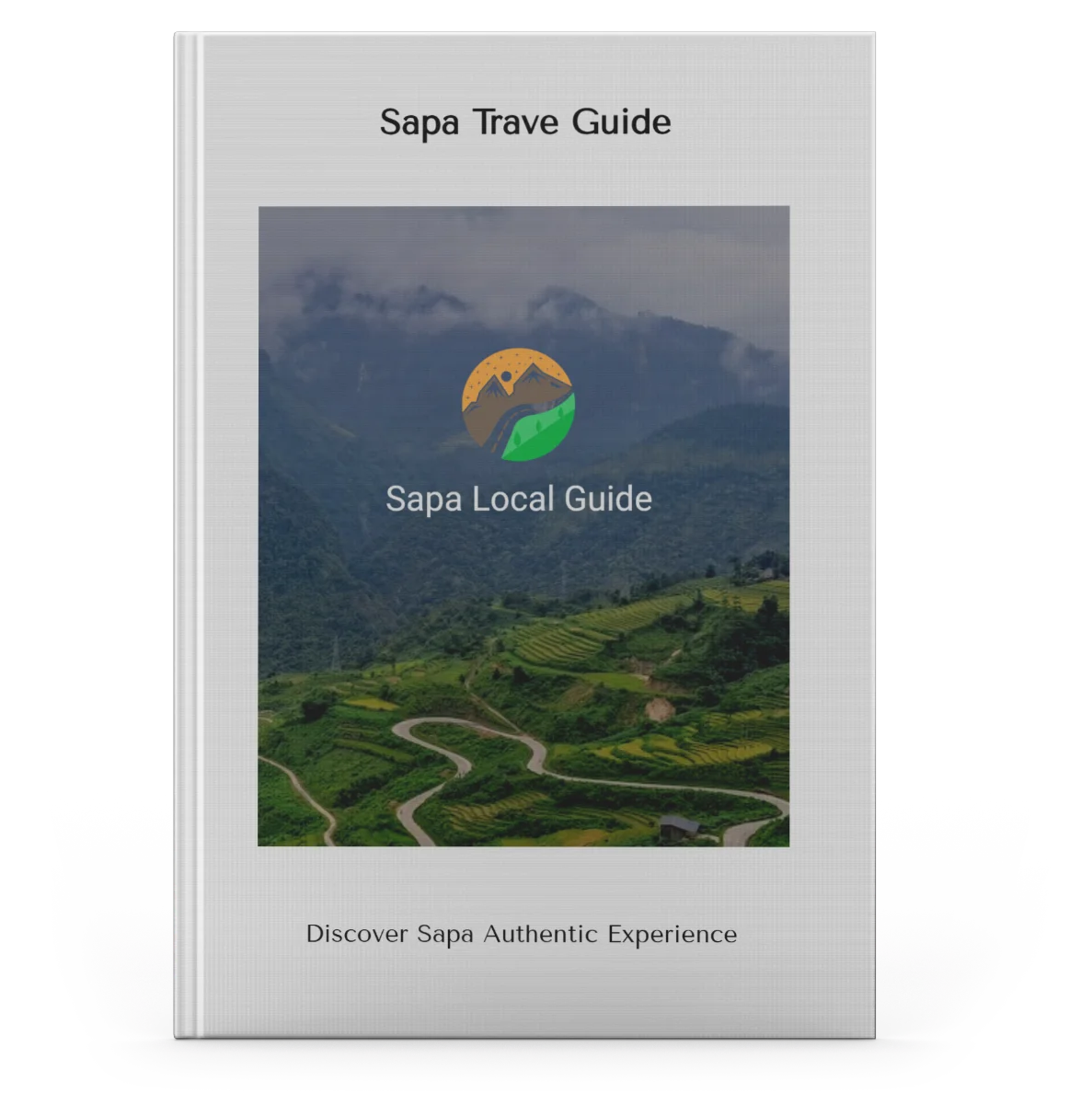![]()
Authentic Experience of Sapa
Plan your trip to Y Linh Ho Village with our local guide. Experience Sapa’s untouched nature, warm locals, and unforgettable landscapes.
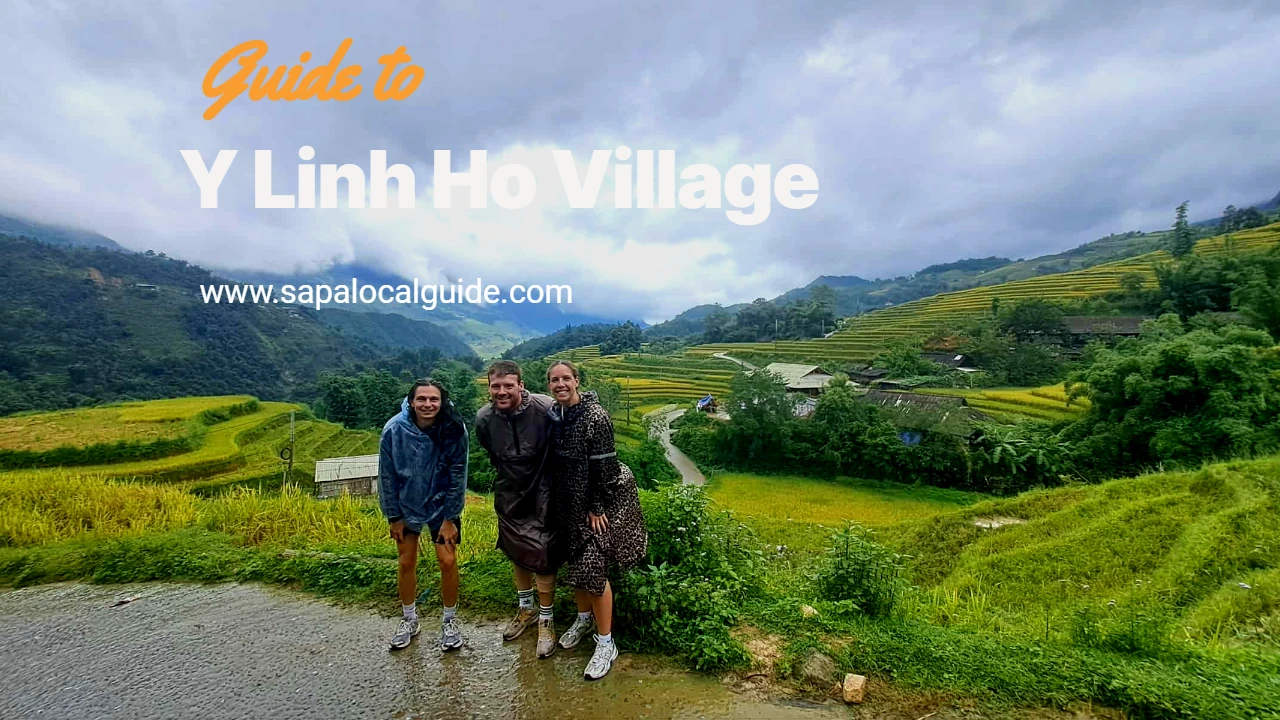
If you’ve ever been to Sapa – checked in at the stone church, visited Cat Cat Village, or trekked Fansipan – you might think you’ve seen it all. But let us tell you, there’s another side of Sapa – peaceful, less crowded, and as breathtaking as a giant lacquer painting.
That is Y Linh Ho Village, our hometown. And today, we want to share with you a one-day trekking journey we once guided, so you can picture what an authentic, rustic, and fulfilling experience here truly feels like.
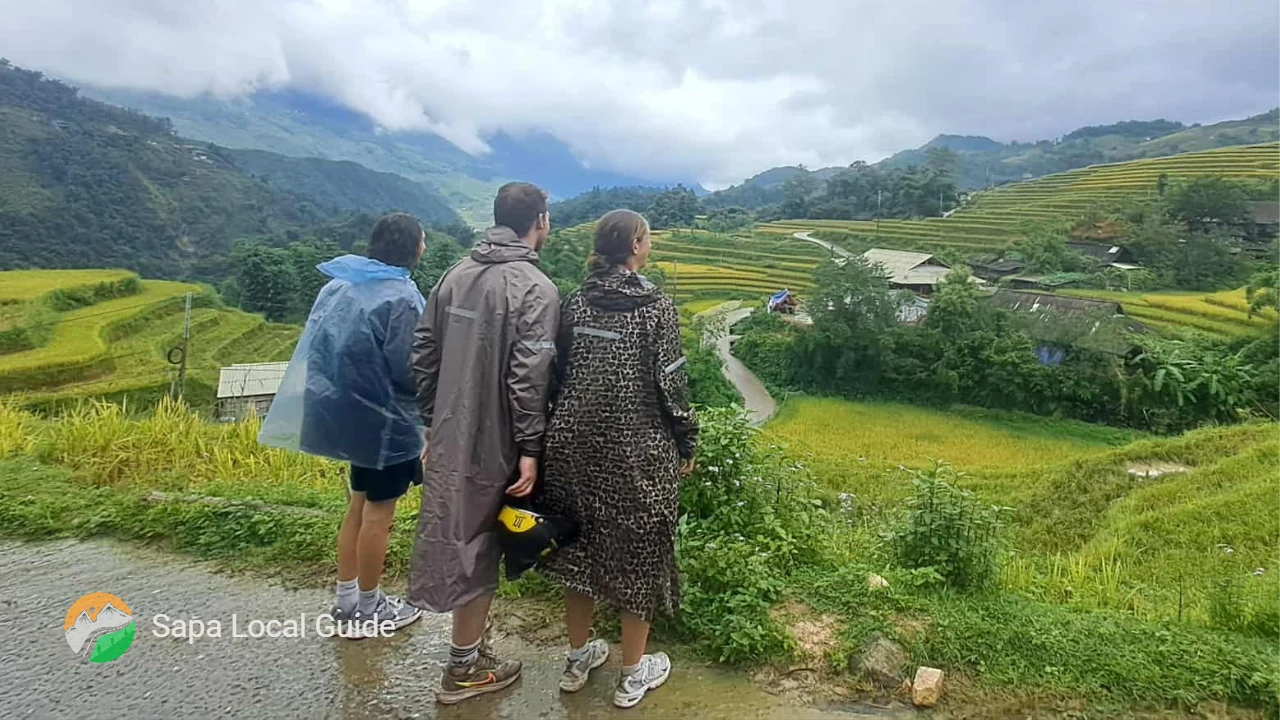
Each season in Y Linh Ho paints a different picture, as if the landscape were constantly shifting. Having lived here for years, every time we bring guests back, it feels like a whole new journey. Below are the “golden moments” you shouldn’t miss:
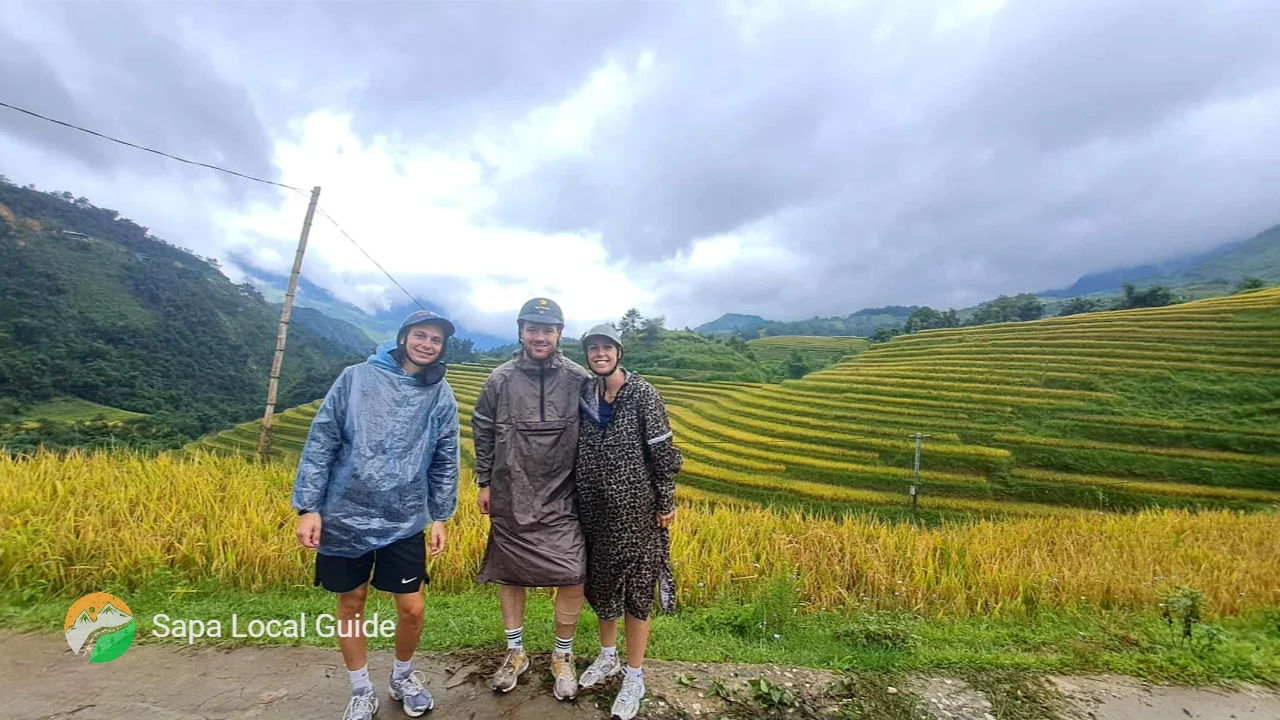
If you ask us: “When is Y Linh Ho at its most beautiful?”
We would answer without hesitation: September.
This is when the Mường Hoa Valley glows in a dazzling golden hue of ripened rice. The trekking paths are dry, the autumn breeze crisp and refreshing, and every step feels like wandering through a living painting of nature. You’ll hear the rustle of leaves, catch the fragrance of new rice in the air, and from afar, the cheerful calls of villagers heading to their fields.
We still remember guiding a group of young friends from Hanoi one September. As soon as we descended a small slope, everyone fell silent for a few moments—until one whispered: “If there’s a place that makes me want to slow down, it must be here.”
But Y Linh Ho is not just about the golden harvest. Once autumn’s brilliance fades, the village dresses itself in another cloak—softer, gentler, and more dreamlike.
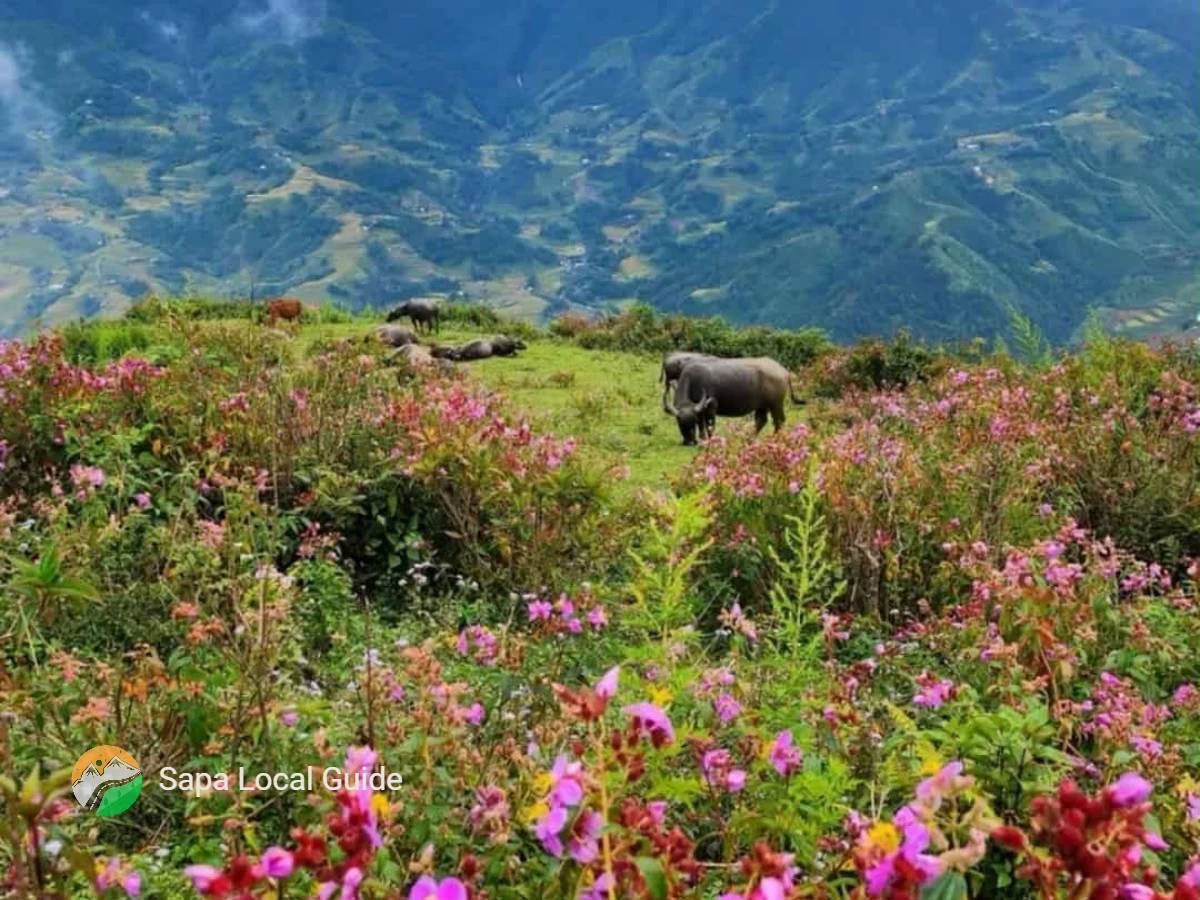
When spring arrives, Y Linh Ho turns into a fairy-tale garden. Pink peach blossoms and pure white plum flowers cover the paths and wooden roofs. Locals call it the “New Year of the mountains,” as the whole village bursts into festive spirit.
We once brought a French family here during this season. Their five-year-old daughter picked fallen petals while giggling. The mother smiled and said: “We’ve traveled a lot, but rarely has she been this happy.”
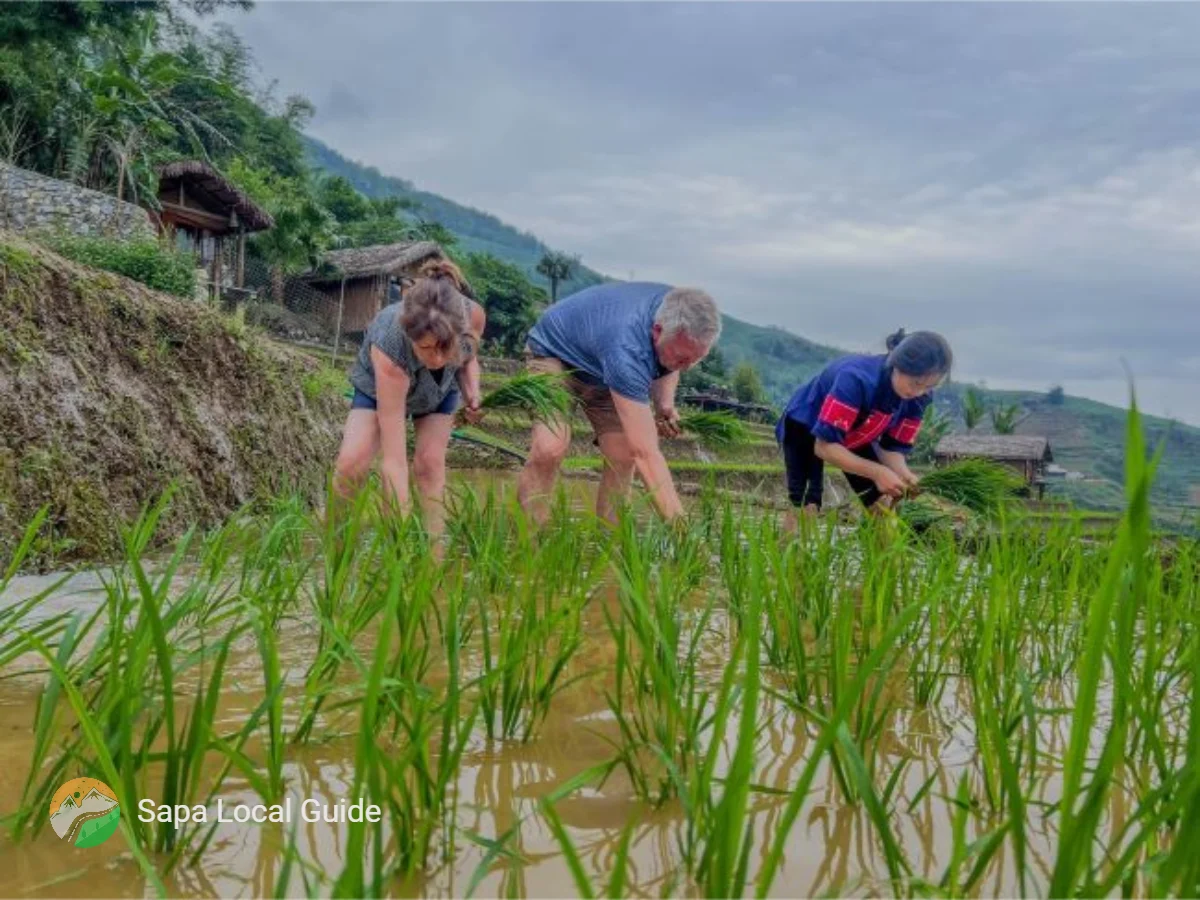
The first rains bring water to the terraced fields, turning the valley into a giant mirror reflecting blue skies and white clouds. We call this the “most beautiful working season”: buffaloes plowing, farmers laughing, children playing on the dikes.
One unforgettable memory was joining foreign friends to help villagers plant rice. At first, everyone was hesitant about the mud, but within minutes, laughter echoed across the valley. Later, washing our hands in the stream and sipping wild leaf tea, someone said: “This moment is the most memorable part of the trip.”
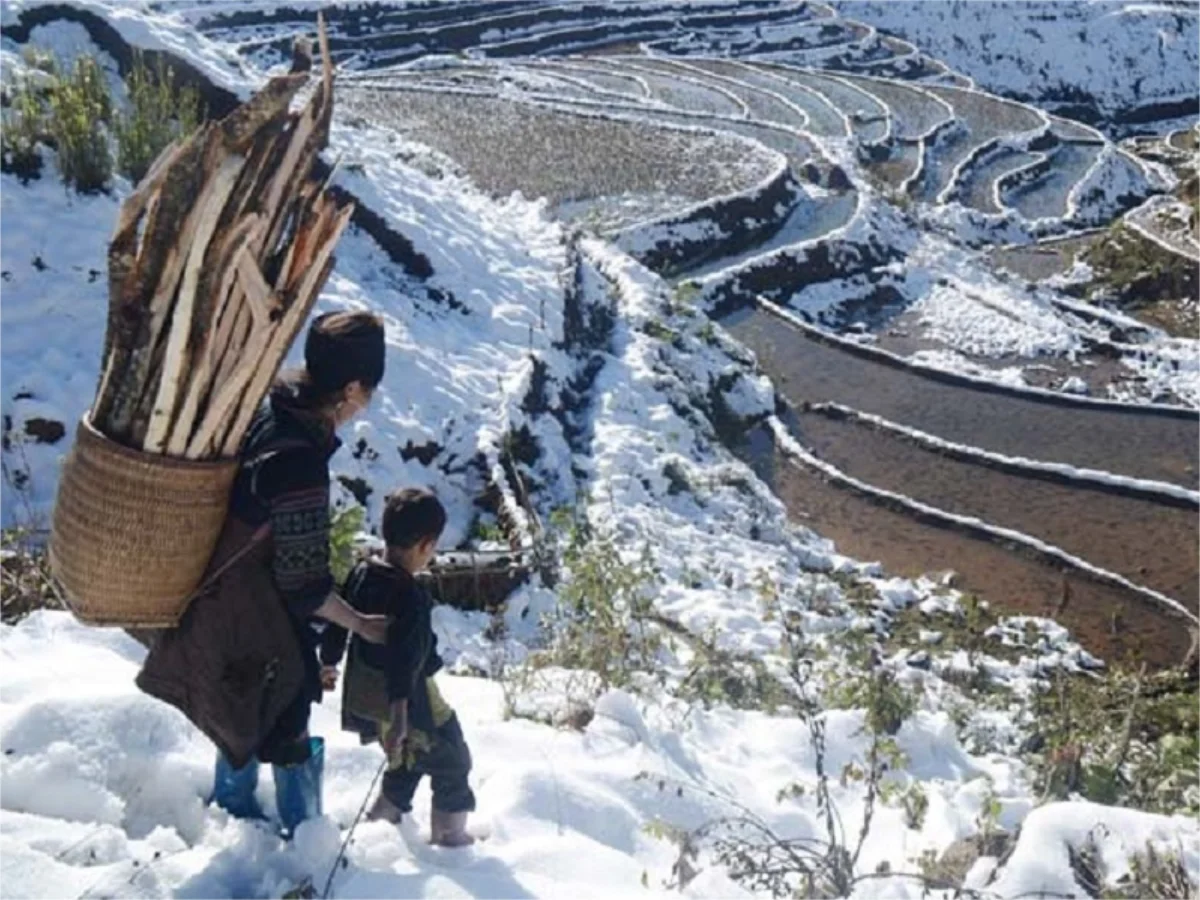
As winter descends, Y Linh Ho sinks into a sea of dreamy, floating white clouds. Crossing the suspension bridge, you’ll feel as if you’ve stepped into another world. And if fortune smiles on you, you might even witness snow blanketing rooftops, peach branches, and terraced fields.
We still remember the winter of 2013, when snow fell so thick that children rushed outside to mold snowballs and toss them at one another. We joined in their laughter, and in that moment, we realized—some of life’s simplest joys feel no different from when we were young.
Every season in Y Linh Ho carries its own “soul”: spring is tender and dreamy, summer is lively and full of energy, autumn shimmers in golden hues, while winter is wrapped in mystical enchantment. Yet, if we could choose only one time to visit, we would still recommend September—when the valley is drenched in its most radiant golden glow of the year.
There are no direct flights that take you straight to Y Linh Ho. The only way is to begin your journey from Hanoi, and from there, you have several options to reach Sapa before continuing on to the village.
After many years of guiding travelers to Sapa, we always recommend the overnight sleeper bus. It’s more than just a means of transport – it feels like a “mobile home” for the nearly 300 km journey.
We still remember our very first ride from Sapa back to Hanoi as students. We boarded the bus at 10 p.m., slipped into the cozy bunk bed, pulled the curtain shut, and felt as if we had our own little private room. The steady hum of the engine lulled us to sleep, just like being at home. And the next morning, when we opened our eyes, the view outside the window was no longer misty mountains but a bustling modern city.
That’s the magic of the sleeper bus:
“You fall asleep in Hanoi, and wake up in the middle of Sapa’s mountains.”
Why choose the overnight sleeper bus:
Ticket price: around 350,000 – 650,000 VND per trip, depending on the bus company and seat type (regular or private cabin).
Other options:
Train: A classic choice, with a gentle rocking rhythm and scenic countryside views along the way. Ticket prices for Hanoi – Lao Cai range from 180,000 – 350,000 VND for a seat, and 450,000 – 700,000 VND for a 4–6 berth sleeper cabin. From Lao Cai, continue by bus or taxi for the remaining 30 km to Sapa.
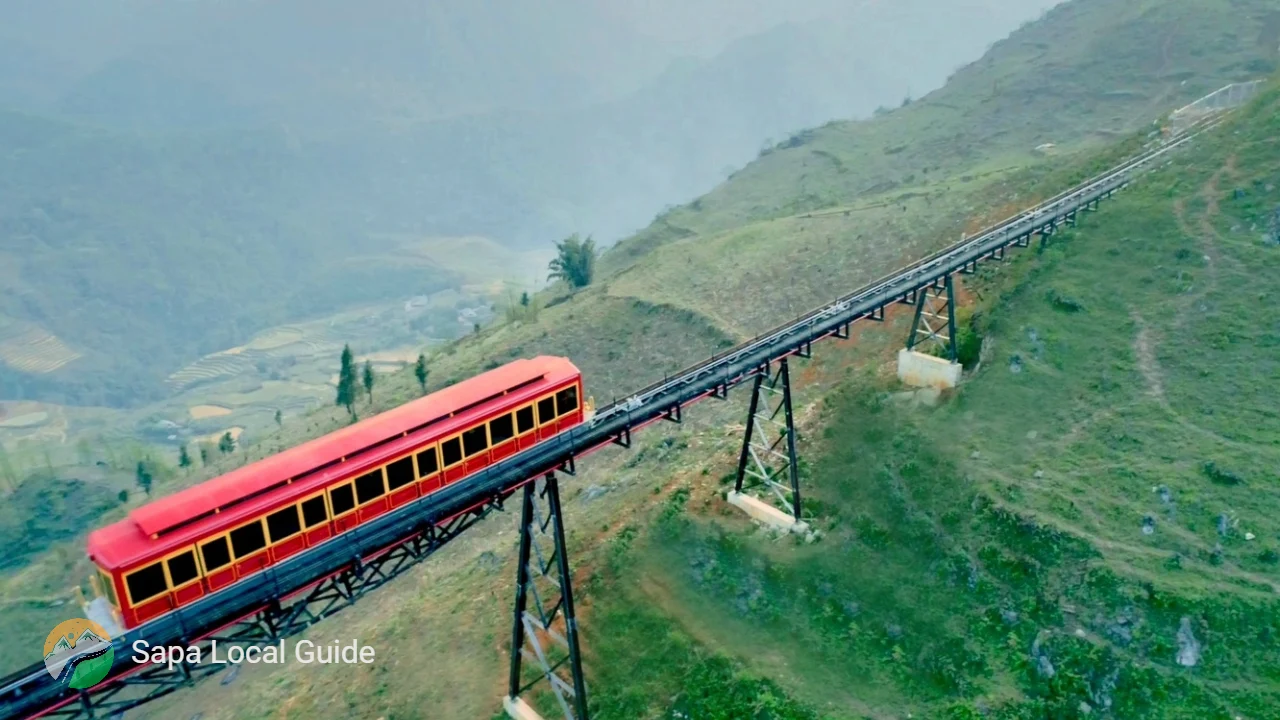
Limousine van: Comfortable reclining seats, more privacy, and door-to-door service. A great option if you prioritize comfort. Prices usually range from 350,000 – 650,000 VND per trip, depending on the company.
By car, it takes around 40 minutes along the winding mountain road.
By motorbike, it’s a bit faster – about 20–30 minutes – but the road is quite steep and winding. However, trekking into the village allows you to fully enjoy every beautiful moment of the journey.
Motorbike rental in Sapa: around 120,000 – 150,000 VND per day, excluding fuel.
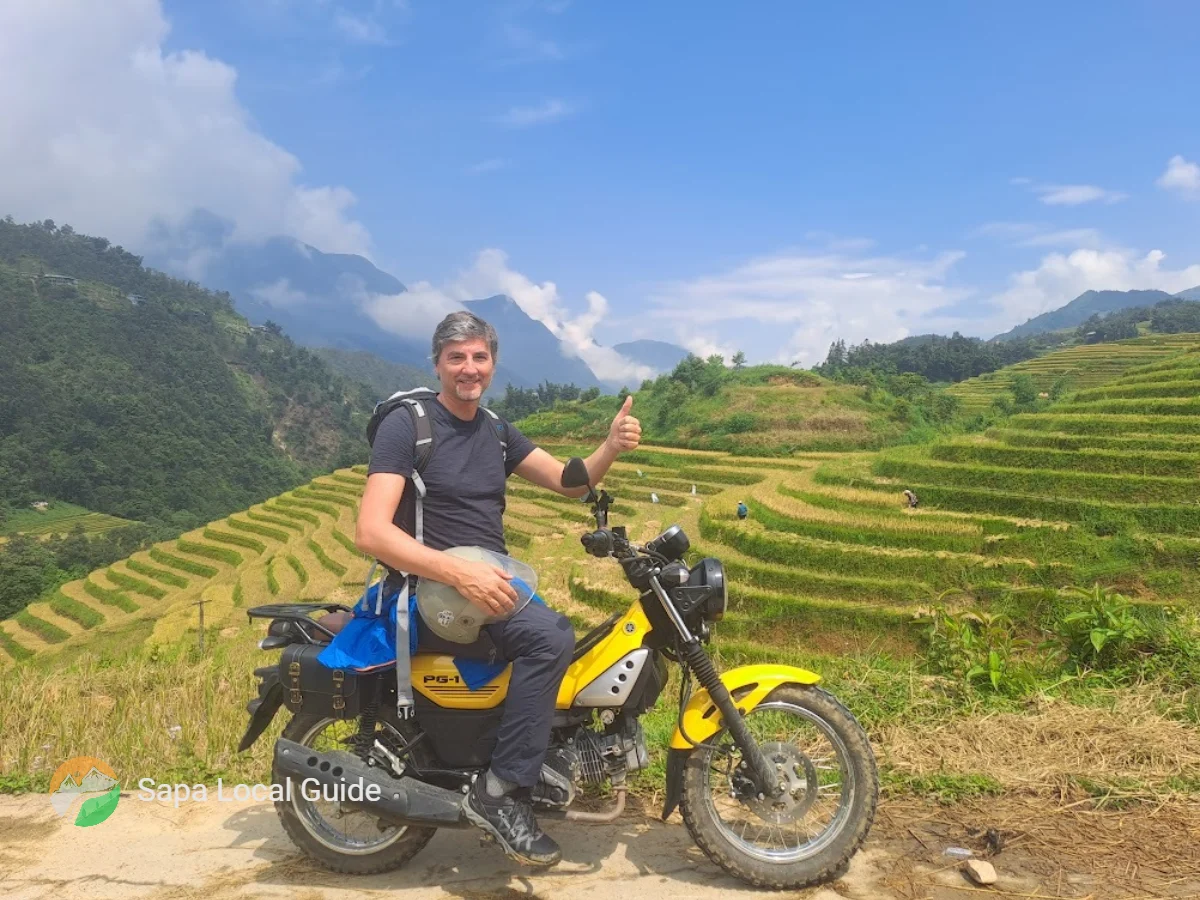
The journey usually begins at the entrance of the village, where your very first steps open up a vivid panorama of highland life. We often guide visitors through six main stops – each like a slice of local life, seamlessly connected to create a complete and authentic experience.
As soon as you descend a small slope, the vast Muong Hoa Valley unfolds before your eyes: endless layers of terraced fields curving gracefully along the mountainsides. Most visitors pause for a few moments, standing silently to take it all in and breathe the spirit of the mountains and forests.
After feasting your eyes on the scenery, you’ll get the chance to test your skills with the H’mong people. They’ll hand you a bamboo pen and a pot of hot beeswax to draw patterns on hemp fabric. It sounds simple, but keeping each line straight is harder than it looks. Many laugh at their crooked “masterpieces,” yet it’s exactly that clumsiness which makes the experience so personal and memorable.
When you see the finished pieces displayed in local homes – scarves, bags, bracelets – you’ll begin to understand the true value behind every stitch. This is your chance to bring home not just a souvenir, but also a story: one of patience, skill, and the delicate artistry of the local women.
After all the activities, a hearty highland lunch awaits you in a cozy wooden house. The menu often includes black chicken steamed with lemongrass, mountain pork grilled over charcoal, crispy stream fish, forest vegetables stir-fried with garlic, and a warming cup of corn wine. Dining here is not just about filling your stomach – it’s about feeling the warmth, hospitality, and closeness of the local people.
In the afternoon, when the sun has softened, we often take guests to the tallest suspension bridge in the village. From here, you can hear the stream murmuring beneath your feet while watching the clouds drift lazily across the mountains. In that moment, every photo you capture comes alive – not just an image, but a feeling.
And finally comes the “secret” part, reserved for those who wish to experience more. A narrow path leads to a little-known waterfall where you can soak in the refreshing stream. Nearby lies a trout farm, where you can catch the fish yourself, cook it, and enjoy it right on the spot. It’s the perfect way to end the journey – unexpected, yet unforgettable.
Nestled deep within the lush green valley, Y Linh Ho is a village rich in age-old traditions. We love taking our guests on a special journey – trying on traditional ethnic costumes and immersing completely in the rhythm of local life.
We still remember the first time we brought guests to the village, when a H’mong homestay host greeted us with a smile and said:
“Tell your guests to try on this H’mong brocade dress – they’ll truly look like beautiful daughters of the village.”
Within minutes, our guest transformed from a distant traveler into a lovely H’mong girl, dressed in a brightly flared skirt, a finely hand-embroidered headscarf, and silver jewelry that jingled with every step. Walking through golden terraced fields, crossing the swaying suspension bridge over the stream, everyone felt not only “beautiful in photos,” but also truly connected to this place – at least for that moment.
Here, traditional costumes are not just for fun. Every single stitch tells a story: of mothers patiently embroidering through long winters, of motifs shaped like mountains, leaves, and streams – symbols of the hopes and lives of the people.
The locals often say: “Wearing a H’mong dress means you should know how to dance to the khen.” Even if you don’t, you’ll surely see children running and playing in their colorful clothes – skirts twirling in the sunlight, laughter echoing alongside the soulful notes of the khen (H’mong bamboo mouth organ). That’s when you realize: clothing here is not merely fabric, but the very soul of the village.
Renting a traditional brocade outfit in Sapa costs only about 150,000 to 300,000 VND (roughly 6–12 USD), yet the value it brings is so much greater. You’ll get beautiful photos, yes, but more importantly, you’ll remember the feeling of once becoming “a local” – even if just for a single, fleeting day.
The people of Y Linh Ho are mostly H’mong – incredibly friendly and sincere. Just by greeting them in a few basic H’mong phrases, the shyness and distance between you will instantly disappear.
For example, here are some simple phrases we often teach our guests to pronounce and use within just one minute:
“Nho giong!” – Hello!
“O Chau” – Thank you!
“Mung ua si” – Let’s go out!
“Nao mao” – Let’s eat!
“Hau de” – Drink water!
“Cu mung che” – I’m going home!
“Nho zoo cu mung che lo” – Goodbye, I’m leaving!
“Kao ua da tri” – What are you doing?
“Kao pua tau kư” – Are you free?
“Cu tao co i tu sa” – May I take a photo?
“Chu ke no mu hay tu” – Where does this road lead?
“Tho cao pang mang cu” – Please help me!
Don’t worry if your pronunciation isn’t perfect – it’s the effort that matters. Your attempt will surely make the locals smile, open up, and share more with you. This is also a wonderful way to learn about the culture, one phrase at a time.
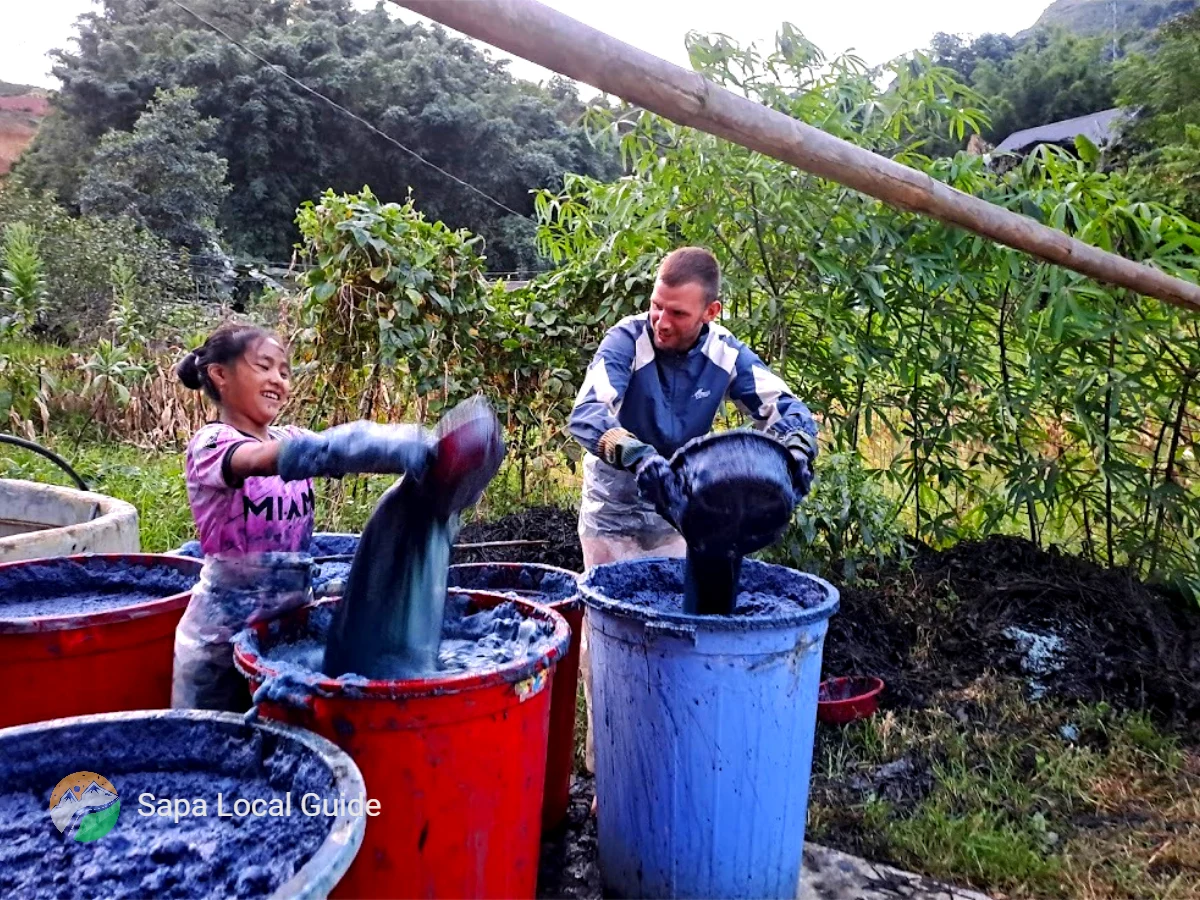
If there’s one thing we truly hope you won’t miss in the village, it is stepping inside a local home and sitting by their fire. Don’t worry – you don’t need prior connections or feel awkward about knocking on a stranger’s door. Simply go with a local guide, or ask the elders and children in the village; they’ll gladly point you to a family happy to welcome guests.
Hospitality here is a source of pride – sharing stories and offering a cup of corn wine is how they show it.
As the wooden door creaks open, you’ll see a smoke-darkened kitchen and a glowing fire crackling warmly. The host will often invite you to sit right beside the hearth, where the family gathers together. That’s when you step into a very different world: stories of the Sapa love market, of corn harvests, of wedding traditions… told simply, yet so real. You don’t just listen – you see their sparkling eyes and hear their heartfelt laughter.
Sometimes, the host may pour you a cup of strong, fragrant corn wine, or invite you to help cook a simple dish like men men (steamed corn flour) or smoked pork. The beauty of it is that you don’t have to act like a guest at all – just sit, listen, talk, laugh, and feel as natural as if you were among long-lost relatives. In that moment, you realize you are no longer just a visitor, but a true member of this small mountain home.
For us, Sapa is not just a tour – it is a journey of connection with nature, with people, and with yourself.
We hope the tips and experiences shared above will help you and your family enjoy the most complete, memorable, and authentic trip to Y Linh Ho Village.
Wishing you a journey full of beautiful memories in Sapa!
And if you’d like to go trekking with our team and local brothers, check out some of our customized tours – such as the one-day trek through the three villages of Y Linh Ho – Lao Chai – Ta Van, where you’ll experience the traditional culture of the Black H’mong people firsthand.
Complete with itinerary, destinations, food, accommodation and tips!
